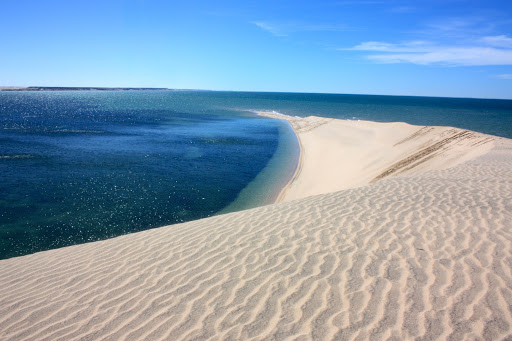
Morocco’s deep south, between the Atlantic Ocean and the Sahara Desert, is still not officially Moroccan territory, yet it is becoming the kingdom’s new economic Eldorado.
Sometimes the traces of the past struggle to dissipate and yet there is nothing better than the sand of the great deserts to cover the wounds of peoples with its dust. But sometimes the sand can do nothing. Thus, in the south of Morocco, a large territory, mostly covered by dunes, bordering Algeria and Mauritania, is the scene of an inextricable political conflict such as only humans are capable of creating.
This vast territory is considered by Morocco as an integral part of its national space, including the regions of Laâyoune-Sakia El Hamra and Dakhla-Oued Ed Dahab, whereas the United Nations, true to its legalistic logic, does not recognise any sovereignty.
According to its terms, Western Sahara is a “Non-Self-Governing Territory”, i.e. not yet decolonised. It is furthermore claimed by the Sahrawi Arab Democratic Republic (SADR), proclaimed by the Polisario Front in 1976, a state entity supported by Algeria, but not recognised by the UN.
Morocco’s sandy roots
Where the UN is right is that this strip of sand has indeed been colonised since 1884. Spain controlled these territories, which were then called the Spanish Sahara.
It was not until the organisation of the Great Green March under the impetus of King Hassan II and the signing of the Madrid agreements on 14 November 1975 that Morocco fully established its sovereignty and built a solid border wall with a small part left to the south under Mauritanian sovereignty.
The other historical certainty is that the Berbers, the ancestors of the Moroccans, have been present there since the dawn of time.
In the 11th century, the great Berber tribe of the Sanhadjas joined forces with the tribes of the Sahara to conquer a large part of West Africa, including two-thirds of Spain. This was the first dynasty of Morocco, the Almoravid dynasty, whose first sultan, Youssef Ibn Tachfin, became the founder of the city of Marrakech.
It is from this original period that the so-called Saharan-Hassan component finds its raison d’être in the preamble of the new Moroccan constitution as a full and complete part of the country’s identity.
A land of future and renewal for Morocco
Today, Morocco’s sovereignty over these Saharan territories is firmly anchored in fact and the recent official recognition by the USA consolidates this reality, paving the way for massive investments in infrastructure and economic projects. Once known only for fishing and phosphate extraction, the two Moroccan regions are promised a bright future around their major urban centres of Laâyoune and Dakhla.
These large spaces swept by the winds of the ocean and the Sahara are ready to welcome a new page in the history of Morocco, with no doubt the creation of new cities and new industrial and tourist projects, all under the auspices of two important pillars of the kingdom’s solar ambition, the Noor Laâyoune and Noor Boujdour solar complexes.

Leave a Reply